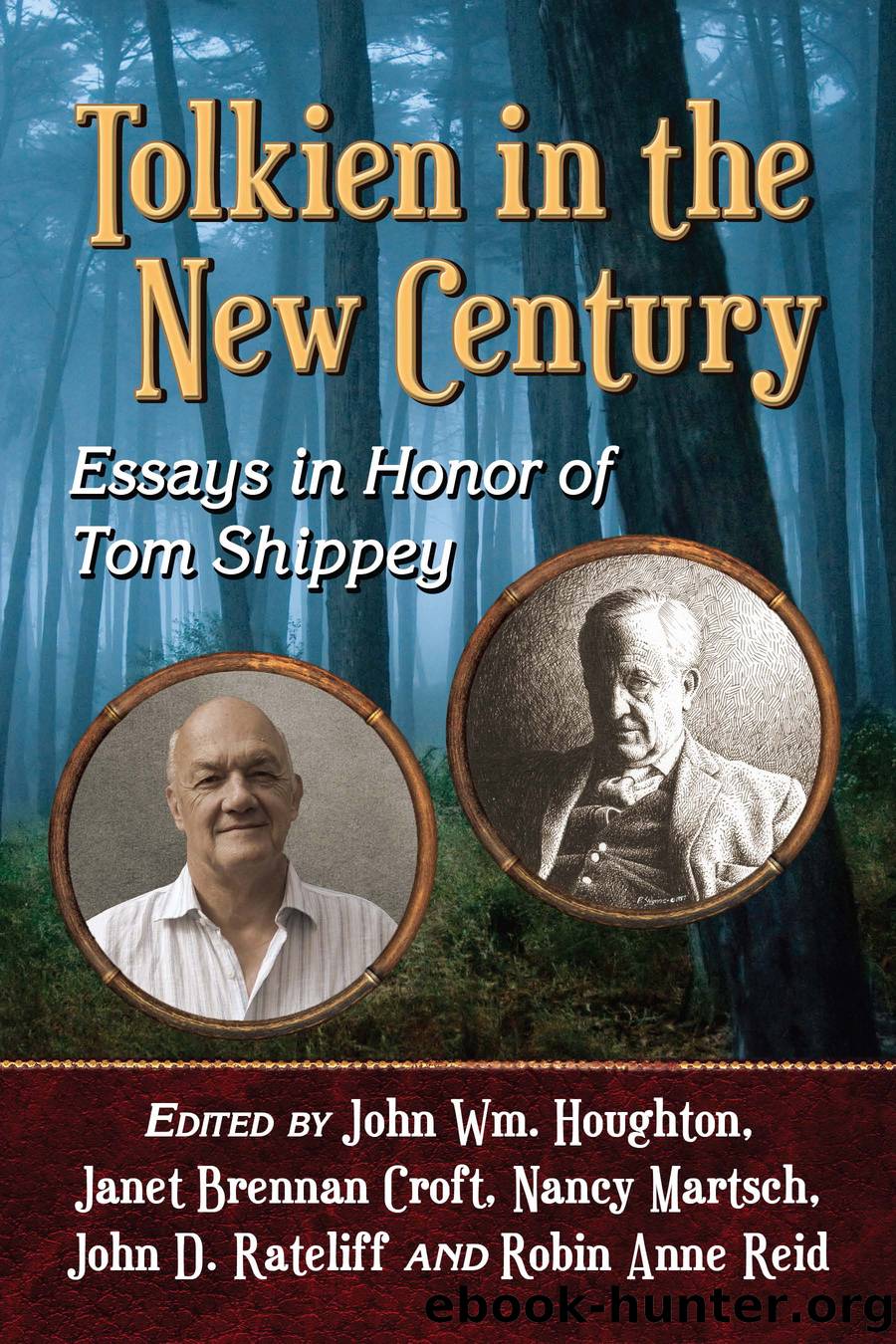Tolkien in the New Century: Essays in Honor of Tom Shippey by John Wm. Houghton

Author:John Wm. Houghton
Language: eng
Format: epub
Publisher: McFarland & Company, Inc., Publishers
Published: 2014-06-23T00:00:00+00:00
First Category: Pastiche and Parody
So too with Tolkienâs works in medieval modes: Once we turn our attention to them, we find they fall into a whole range or continuum, from pastiche and parody to wholly new works employing the metrical scheme or other distinctive attributes of a given genre or specific major medieval work. Sometimes the subject matter remains close to that of its progenitor, as in âThe Lay of Aotrou and Itrounâ or The Fall of Arthur; sometimes they are widely divergent, as in Ãlfwineâs âAnnals.â Of them all, none is closer to its original than âThe Clerkes Compleinte,â4 a clever pastiche of the âGeneral Prologueâ to The Canterbury Tales written in good Chaucerian Middle English. âThe Clerkes Compleinteâ shares not just the language and metre of Chaucerâs Prologue but even some of the same lines,5 while many others are direct reversals of Chaucerâs originals. For example, âWhan that Aprill with his shoures soote / The droghte of March hath perced to the rooteâ becomes in Tolkienâs poem âWhanne that Octobre mid his schoures derke / The erthe hath dreint, and wete windes cherkeâ (lines 1â2). Instead of Zephirus, the gentle West wind, we have Eurus, the sopping wet East wind (Chaucer line 5; Tolkien line 7); instead of gathering to travel to Canterbury in the south, âIn al the North to Leedes done they wende ⦠the fairest toune of Yorkeschireâ (lines 16â17). Similarly, âAnd smale foweles maken melodye / That slepen al the nyght with open eyeâ becomes âwrecche cattes youlen umbewhiles / That slepen nat but wandren on the tilesâ (lines 9â10).
After thus closely paralleling Chaucerâs text for the first twenty lines or so, Tolkienâs diverges thereafter, so that rather than a description of how the pilgrims gather for their journey to Canterbury we get instead the mock-serious story of a hapless applicant to a university (Leeds) who fails miserably to gain admittance.
Closely associated with this both in the proximity of their medieval sources and their subject matter is the still-unpublished poem âDoworst,â which takes its inspiration from The Vision of Piers Plowman.6 Tolkienâs parody-poem is headed in Latin âVisio Petri Aratoris de Doworstâ (âVision of Peter [or Piers] Plowman about Do-Worstâ) to parallel the title of Langlandâs work, just as âDoworstâ itself (no doubt deliberately) calls to mind the rubrics (or subtitles) given in many manuscripts to the latter sections of Piers Plowman: âDowelâ (âDo well,â Passus VIIIâXIV), âDobetâ (âDo better,â Passus XVâXVIII), and âDobestâ (âDo best,â Passus XIXâXX). In any case, unlike the first third of âThe Clerkes Compleinte,â in âDoworstâ only one line (the first) closely mimics a specific line of the original, with Langlandâs âIn a somer seson, whan softe was the sonneâ becoming Tolkienâs âIn a summer season when sultry was ye sunâ; thereafter follows a spirited scene, unfortunately soon cut short in our fragment, of dim-witted students (âlourdins [= stupid lazy louts] & lubbers ⦠wood in his wits was each wiÈtâ) coming to grief in their oral exams (or vivas).
Download
This site does not store any files on its server. We only index and link to content provided by other sites. Please contact the content providers to delete copyright contents if any and email us, we'll remove relevant links or contents immediately.
The Power of Myth by Joseph Campbell & Bill Moyers(1014)
Half Moon Bay by Jonathan Kellerman & Jesse Kellerman(954)
Inseparable by Emma Donoghue(937)
A Social History of the Media by Peter Burke & Peter Burke(936)
The Nets of Modernism: Henry James, Virginia Woolf, James Joyce, and Sigmund Freud by Maud Ellmann(836)
The Spike by Mark Humphries;(766)
The Complete Correspondence 1928-1940 by Theodor W. Adorno & Walter Benjamin(749)
A Theory of Narrative Drawing by Simon Grennan(742)
Culture by Terry Eagleton(724)
Ideology by Eagleton Terry;(696)
Bodies from the Library 3 by Tony Medawar(683)
World Philology by(678)
Farnsworth's Classical English Rhetoric by Ward Farnsworth(674)
Game of Thrones and Philosophy by William Irwin(671)
High Albania by M. Edith Durham(659)
Adam Smith by Jonathan Conlin(648)
A Reader’s Companion to J. D. Salinger’s The Catcher in the Rye by Peter Beidler(646)
Comic Genius: Portraits of Funny People by(616)
Monkey King by Wu Cheng'en(611)
